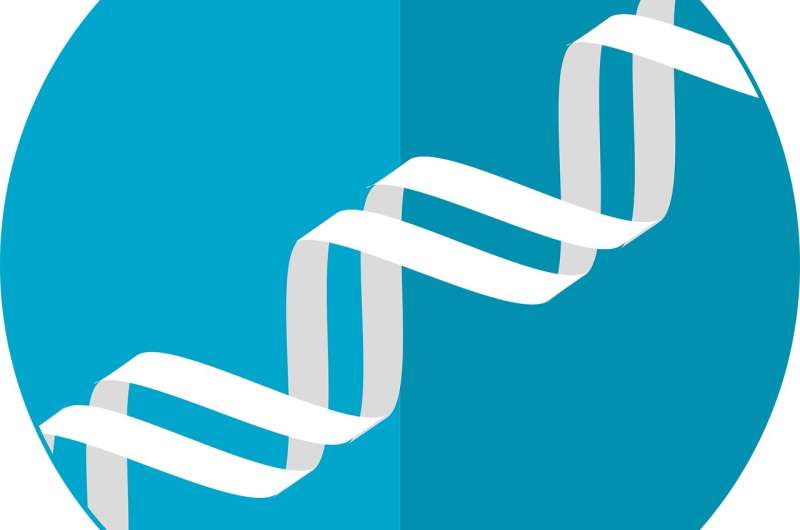
A genetic change or variant in a gene called SCN2A is a known cause of infantile seizures, autism spectrum disorder, and intellectual disability, as well as a wide range of other moderate-to-profound impairments in mobility, communication, eating, and vision.
The severity of these disorders can vary widely from person to person, but little is known about what is happening at the level of the SCN2A protein to cause these differences.
A new Northwestern Medicine study helps explain how changes in the SCN2A gene affect whether or not a child will develop autism or epilepsy, the age at which seizures start for those with epilepsy, and the severity of the child’s other impairments.
The study is published in Brain.
These findings will help better identify patients who are most appropriate for clinical trials of new precision therapies, including those targeting the SCN2A gene itself.
Analyzing sodium channels
The study represents a collaboration between an academic laboratory at Northwestern and the FamilieSCN2A Foundation, a parent-led rare disease advocacy group. The SCN2A Clinical Trials Readiness Study (SCN2A-CTRS) recruited 81 families from around the world and collected detailed clinical data and information to identify their SCN2A variants. The median age was 5.4 years. The youngest age participant was 1 month old and the oldest was 29 years old.
The Northwestern team extensively analyzed the functional effects of each SCN2A variant on the sodium channels—tiny gates in the membranes of nerve cells that control the flow of sodium ions into the cell and help neurons in the brain fire properly. Variants in the SCN2A gene alter how the sodium channel functions.
Depending on the individual variant, the channel may be hyperactive (sodium ions flowing more freely) or completely inactive (the channel not working at all). There are variants that make the channel work in ways that are more complex.
The study found a spectrum of effects of the SCN2A variants on sodium channel function, from hyperactive channels to completely inactive channels. Importantly, the clinical condition of the child varied with the functional impact on the channel.
Hyperactive channels were generally associated with seizure onset in the first week of life. More impaired channel function was more common when the age of seizure onset was older. In fact, almost all of those without seizures had completely inactive sodium channels.
The severity of other disease-related features also followed this gradient with those most severely impaired (unable to walk, communicate, eat, use their hands), having the youngest age at seizure onset, and hyperactive channels. As age at seizures-onset increased and channels became less active, severe neurological impairments in the child tended to be less severe.
“We previously knew that genetic changes in the SCN2A gene were associated with seizures beginning as early as the newborn period and up through the first few years of life,” said co-corresponding author Dr. Alfred George, chair of pharmacology at Northwestern University Feinberg School of Medicine. “We had an overly simplistic understanding of these associations.
“Our new study clarifies the relationship between the functional consequences of SCN2A mutations, the primary phenotype (autism versus epilepsy and age at seizure onset in those with epilepsy), and the overall severity of the child’s impairments (mobility, etc.).”
Findings challenge prevalent understanding
There is a prevalent understanding among scientists that early-onset seizures are associated only with hyperactive sodium channels, and underactive or inactive channels are associated with autism, George said. However, it’s more complicated, and children with early onset—in the first three months but after the immediate newborn period—don’t have hyperactive channels.
“This is important because new precision medicines that are best suited for hyperactive SCN2A variants could be harmful to those with underactive or inactive variants,” George said. “Relying only on the age of seizure onset as a criterion for clinical trial enrollment risks inclusion of inappropriate patients.”
Dr. Anne Berg, adjunct professor of neurology at Feinberg, lead investigator of the SCN2A-CTRS and the co-corresponding study author, emphasized that “in the era of precision medicine for rare genetic diseases, this collaboration between a family foundation and a large NIH-funded project is an exemplar of the new partnerships that are needed and increasingly being developed to provide rapid answers to critical questions and lay foundation for successful drug development for severe neurodevelopmental disorders such as those associated with SCN2A.”
More information:
Anne T Berg et al, Expanded clinical phenotype spectrum correlates with variant function in SCN2A-related disorders, Brain (2024). DOI: 10.1093/brain/awae125
Citation:
Gene linked to epilepsy and autism decoded in new study (2024, April 26)
gene-linked-epilepsy-autism-decoded.html
.
. The content is provided for information purposes only.
